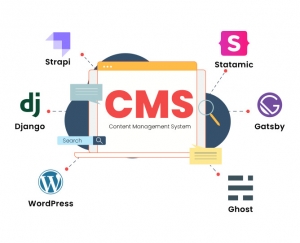In the rapidly evolving business landscape, customer expectations are higher than ever. Companies must provide quick, efficient, and personalized service to remain competitive. One of the most significant technological innovations transforming customer service today is call center automation. By leveraging advanced technologies such as artificial intelligence (AI), robotic process automation (RPA), and machine learning, organizations can enhance efficiency, reduce operational costs, and improve the overall customer experience.
This article delves into the concept of call center automation, its benefits, key technologies, challenges, and best practices for successful implementation.
Understanding Call Center Automation
Call center automation refers to the use of technology to streamline and optimize the operations of a call center. This involves automating repetitive tasks, managing customer interactions more efficiently, and enabling agents to focus on high-value activities that require human judgment and empathy.
Automation in call centers can take many forms, including:
-
Interactive Voice Response (IVR) systems
-
Automated call routing
-
Chatbots and virtual assistants
-
Workflow automation for back-office processes
-
Predictive analytics for customer behavior
The primary goal of call center automation is to create a seamless, faster, and more accurate customer service experience while reducing the dependency on human intervention for routine tasks.
The Key Technologies Behind Call Center Automation
The effectiveness of call center automation relies on the integration of several cutting-edge technologies. Here are the most crucial ones:
1. Artificial Intelligence (AI)
AI-powered systems can understand natural language, process vast amounts of data, and make decisions in real-time. AI enables:
-
Smart routing: Directing calls to the most suitable agent based on skill, availability, and customer profile.
-
Sentiment analysis: Understanding the emotional tone of a customer's speech to tailor responses appropriately.
-
Predictive assistance: Providing agents with real-time suggestions to solve customer issues faster.
2. Robotic Process Automation (RPA)
RPA automates repetitive and rule-based tasks, such as data entry, ticket creation, and account updates. This frees human agents from mundane activities and allows them to focus on complex problem-solving.
3. Natural Language Processing (NLP)
NLP allows systems to understand and interpret human language. In call centers, NLP is commonly used in:
-
Chatbots that can understand customer queries and respond naturally.
-
Voice recognition systems that interpret spoken commands.
-
Sentiment detection to gauge customer satisfaction.
4. Cloud-Based Platforms
Cloud technology ensures scalability and flexibility for modern call centers. Cloud-based solutions facilitate remote work, reduce infrastructure costs, and enable seamless integration with other enterprise systems like CRM and ERP.
5. Predictive Analytics
Predictive analytics uses historical data to forecast customer behavior and call patterns. It helps call centers:
-
Anticipate call volumes and allocate resources effectively.
-
Identify potential issues before they escalate.
-
Personalize customer interactions based on preferences and past interactions.
Benefits of Call Center Automation
Implementing call center automation provides numerous benefits for both organizations and customers. Some of the most notable advantages include:
1. Improved Customer Experience
Automation reduces wait times, ensures accurate responses, and provides 24/7 support. For example, an AI-powered virtual assistant can handle simple inquiries immediately, leaving agents available for more complex issues.
2. Increased Efficiency and Productivity
By automating routine tasks, agents can focus on high-value interactions. This leads to faster resolution times, higher productivity, and more satisfied employees.
3. Cost Reduction
Automation can significantly lower operational costs by reducing the need for extensive staffing and minimizing human errors. Predictive routing and smart resource allocation ensure optimal use of personnel.
4. Data-Driven Insights
Automated systems collect and analyze vast amounts of data. This provides actionable insights into customer behavior, agent performance, and operational efficiency, enabling informed decision-making.
5. Scalability
Automated systems can handle varying call volumes without the need for proportional increases in staff. This is particularly valuable during peak seasons or promotional campaigns.
Common Use Cases of Call Center Automation
Call center automation can be applied in various scenarios, including:
1. Interactive Voice Response (IVR) Systems
IVR systems allow customers to interact with an automated menu through voice or keypad input. They can route calls, provide information, and resolve simple queries without human intervention.
2. Chatbots and Virtual Assistants
Chatbots are widely used to handle online customer interactions. They provide instant responses, handle FAQs, and escalate complex issues to human agents when necessary.
3. Automated Call Routing
Automation ensures that customers are connected to the most appropriate agent based on skills, location, and previous interactions. This reduces call transfers and enhances satisfaction.
4. Automated Ticketing
When a customer contacts support, automated systems can create tickets, assign priorities, and route them to the correct department. This ensures timely follow-ups and prevents missed requests.
5. Real-Time Agent Assistance
AI-driven systems can assist agents during live calls by suggesting responses, providing relevant information, and even identifying upsell opportunities.
Challenges in Implementing Call Center Automation
While call center automation offers numerous benefits, organizations may encounter challenges during implementation:
1. Integration Complexity
Integrating automation tools with existing CRM, ERP, and telephony systems can be complex and requires careful planning.
2. Customer Resistance
Some customers prefer human interaction and may feel frustrated when dealing with automated systems, especially for sensitive issues.
3. High Initial Investment
Advanced automation solutions may require significant upfront costs. However, the long-term ROI often justifies the investment.
4. Data Privacy and Security
Handling sensitive customer data through automated systems necessitates stringent security protocols to prevent breaches and ensure compliance with regulations like GDPR.
5. Maintenance and Updates
Automated systems require regular updates and maintenance to stay effective and adapt to evolving customer expectations.
Best Practices for Successful Call Center Automation
To maximize the benefits of call center automation, organizations should follow these best practices:
1. Start Small and Scale Gradually
Begin by automating simple, repetitive tasks before moving on to more complex processes. This minimizes risk and helps employees adapt to the changes.
2. Focus on Customer Experience
Automation should enhance, not replace, human interaction. Ensure that systems are intuitive, responsive, and capable of escalating issues to live agents when necessary.
3. Train Employees
Agents should be trained to work alongside automated systems. They need to understand how to leverage AI tools and RPA to improve efficiency and customer satisfaction.
4. Monitor Performance
Continuously track key performance indicators (KPIs) such as average handling time, first call resolution, and customer satisfaction to measure the impact of automation.
5. Ensure Data Security
Implement robust security measures and comply with relevant data protection regulations to maintain customer trust.
6. Regularly Update Technology
Stay ahead of the curve by adopting emerging technologies like advanced AI, NLP, and predictive analytics to continually enhance automation capabilities.
The Future of Call Center Automation
The future of call center automation is closely tied to advancements in AI, machine learning, and omnichannel communication. Some anticipated trends include:
-
Hyper-Personalization: AI systems will leverage customer data to provide highly tailored interactions.
-
Proactive Support: Predictive analytics will enable businesses to anticipate customer needs and resolve issues before they occur.
-
Voice and Emotion AI: Advanced voice recognition and emotion detection will allow for more empathetic and natural interactions.
-
Seamless Omnichannel Experiences: Automation will ensure a consistent experience across phone, chat, email, and social media platforms.
-
Fully Automated Contact Centers: While human agents will remain crucial for complex interactions, many routine tasks will be entirely automated, creating a hybrid model of human-AI collaboration.
Conclusion
Call center automation is no longer just a technological trend—it is a necessity for modern businesses aiming to provide exceptional customer service while maintaining operational efficiency. By integrating AI, RPA, NLP, and other innovative technologies, organizations can streamline processes, reduce costs, and deliver a superior customer experience.
However, successful implementation requires careful planning, employee training, and a strong focus on customer satisfaction. By embracing automation thoughtfully, businesses can create a future-ready contact center that not only meets but exceeds customer expectations, ensuring long-term growth and competitive advantage.
In summary, the era of call center automation represents a significant shift in how customer interactions are managed. Companies that adapt to this change will be better positioned to thrive in a fast-paced, customer-centric world.





